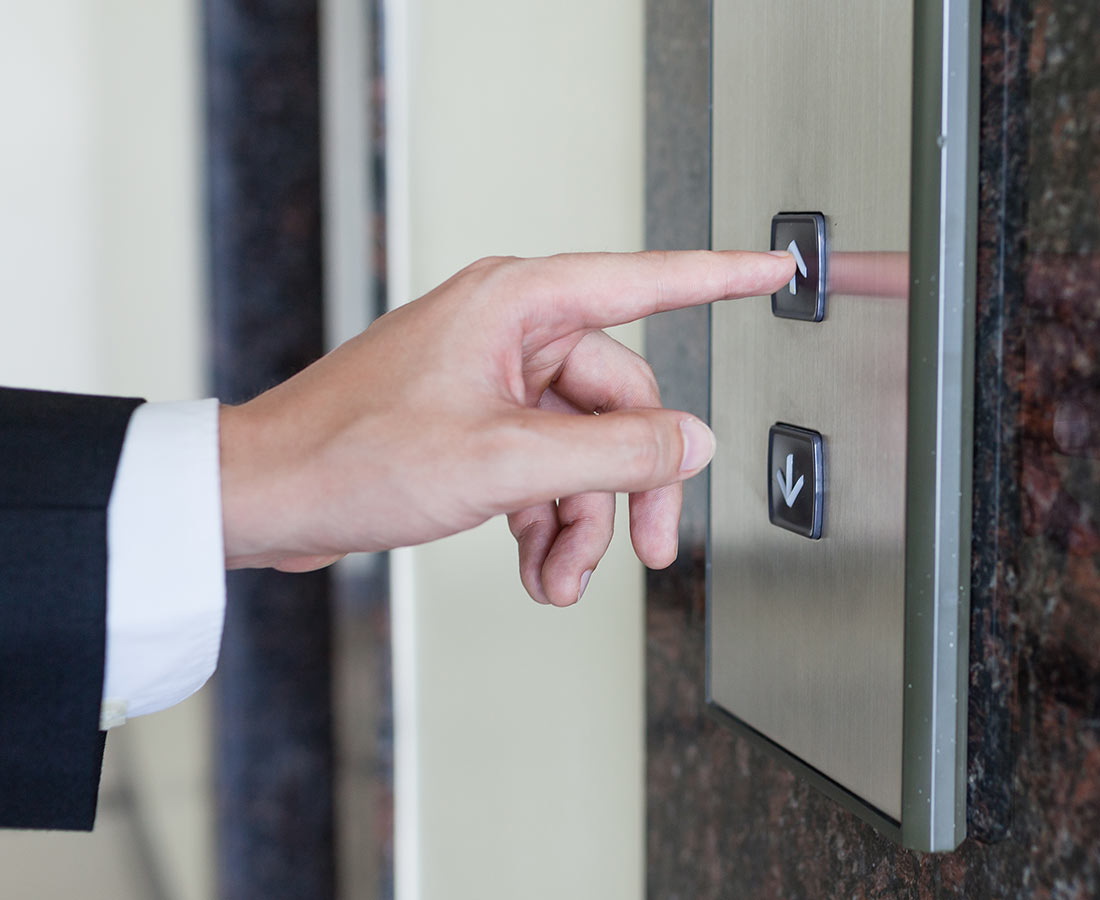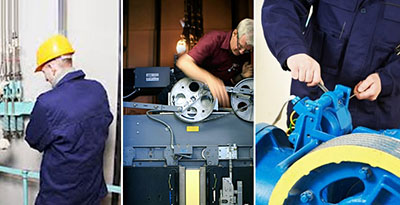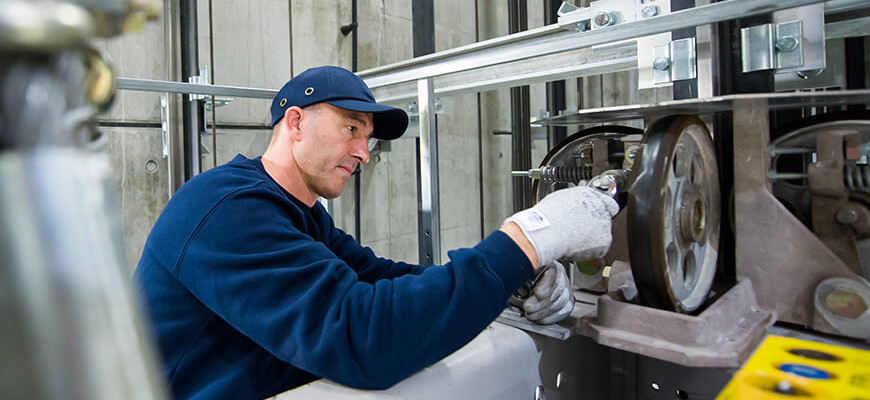Thorough Lift Solution Plan Incorporating Troubleshooting, Adjustment, and Calibration
In the world of vertical transportation systems, lifts play an important function in ensuring reliable motion within structures. A thorough elevator service plan that incorporates troubleshooting, calibration, and change is not simply a routine upkeep schedule; it is a thorough method to boosting the performance and safety criteria of these vital mechanisms.

Importance of Lift Upkeep
Elevator maintenance is a critical element of making certain the risk-free and reliable operation of a structure's vertical transportation system. Routine upkeep not only prolongs the lifespan of the lift yet also reduces the threat of unanticipated break downs, guaranteeing the safety and security of occupants. By adhering to an organized upkeep strategy, structure proprietors and facility managers can identify and attend to possible concerns prior to they intensify right into significant problems, thus decreasing downtime and expensive repair services.
Routine upkeep tasks consist of inspecting and lubricating relocating components, screening safety and security attributes, and readjusting mechanisms to preserve ideal performance. Furthermore, routine maintenance assists to guarantee that the elevator follows security policies and requirements set by relevant authorities. Neglecting maintenance can result in malfunctions, such as abrupt quits in between floorings, door problems, or electric failings, every one of which can trouble individuals and jeopardize their safety.
Fixing Strategies for Lifts
Making sure the efficient and secure procedure of a building's upright transportation system with normal maintenance additionally includes the application of reliable fixing strategies for dealing with possible lift issues without delay. Troubleshooting methods for lifts are important to preserving a trustworthy elevator solution.
An additional essential troubleshooting method is conducting a comprehensive physical inspection of the lift parts. This involves checking for any kind of indications of damage, loosened connections, or unusual noises throughout procedure. By visually examining the elevator equipment and electric systems, professionals can identify possible issues before they intensify into significant issues.
In addition, fixing strategies for lifts frequently involve testing different security attributes, such as emergency situation brakes and door sensors, to ensure they are working properly. Consistently testing these safety and security devices can aid ensure and prevent accidents guest safety and security. By including these repairing strategies right into an elevator solution strategy, structure owners can reduce downtime, decrease repair work costs, and assure a smooth upright transport experience for residents.
Accuracy Adjustments in Elevator Service
Implementing exact adjustments is extremely important in preserving the optimum functionality and performance of lift systems within a building. lift servicing. Elevators are intricate mechanical systems that require thorough fine-tuning to guarantee smooth and effective operation. Accuracy adjustments play a vital duty in improving safety, lowering downtime, and prolonging the life expectancy of you could try here lift components
When carrying out accuracy modifications in lift service, specialists have to possess a deep understanding of the system's characteristics and mechanics. Tiny inconsistencies in alignment, progressing, or rate can bring about significant issues if not attended to without delay. By very carefully calibrating parameters such as door closing times, leveling accuracy, and acceleration rates, specialists can enhance the general efficiency of the lift.
Moreover, accuracy adjustments help prevent premature damage on crucial elements, such as cable televisions, sheaves, and control systems. On a regular basis set up upkeep that includes fine-tuning modifications can alleviate the danger of costly repairs and unexpected breakdowns. Lift provider must prioritize accuracy modifications as part of their comprehensive upkeep strategies to support the highest requirements of integrity and passenger safety.
The Value of Calibration Procedures

Calibration processes additionally play an important function in lengthening the life expectancy of lift tools. Routine calibration assists recognize potential problems beforehand, enabling timely adjustments or substitutes prior to major issues develop. This aggressive method not only stops costly downtime but likewise adds to the total reliability of the elevator system.
Furthermore, calibration is essential for making certain compliance with industry policies and requirements. By complying with maker referrals and market ideal techniques throughout calibration treatments, lift solution providers can ensure that the system satisfies all essential safety and security needs. Properly click resources calibrated elevators not just enhance user experience however likewise demonstrate a commitment to passenger safety and building regulations conformity.
Enhancing Lift Efficiency and Long Life
To maximize lift efficiency and extend its longevity, a thorough maintenance timetable is critical. Routine upkeep not only guarantees that the lift runs effectively yet likewise aids in recognizing potential problems prior to they intensify, therefore minimizing downtime and pricey repair services.
Furthermore, carrying out modern-day technologies like IoT sensors and anticipating maintenance software application can provide real-time data on lift performance, enabling predictive upkeep organizing and reducing unforeseen breakdowns. Upgrading older lift systems with energy-efficient components can also add to better performance and decreased power intake, bring about cost savings in the future. By focusing on regular maintenance, embracing new technologies, and taking into consideration system upgrades, structure proprietors can considerably improve lift efficiency and lengthen its lifespan, guaranteeing smooth procedures for visitors and residents alike.

Final Thought
Finally, lift upkeep is critical for ensuring optimal performance and longevity. By implementing troubleshooting techniques, precision changes, and calibration procedures, elevator solution suppliers can boost the general capability of lifts. Routine maintenance not only improves safety and reliability but additionally decreases downtime and pricey fixings. Spending in a comprehensive elevator solution strategy is vital for optimizing the lifespan of lifts and making sure smooth transportation for building occupants.
Repairing methods for lifts are important to maintaining a trusted elevator solution.Additionally, implementing contemporary innovations like IoT sensors and anticipating maintenance software program can offer real-time information on elevator performance, making it possible for predictive upkeep scheduling and minimizing unexpected break downs (elevator repair). By focusing on regular maintenance, taking on new modern technologies, and considering system upgrades, structure proprietors can considerably improve lift performance and prolong its life expectancy, ensuring smooth operations for owners and visitors alike
By applying troubleshooting techniques, precision changes, and calibration procedures, elevator service companies can improve the total capability of elevators. Investing in an extensive lift solution strategy is crucial for taking full advantage of the life expectancy of lifts and making certain smooth transportation for developing passengers.